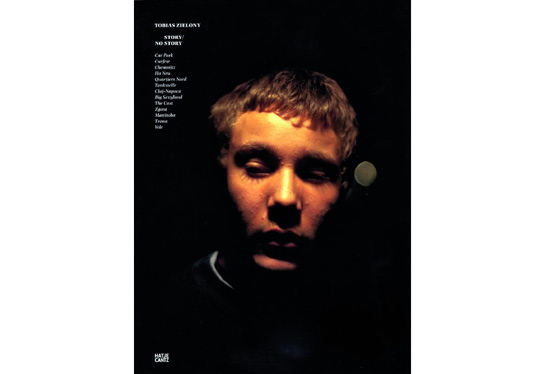Review: Story/No Story by Tobias Zielony

Maybe there is something new to be said about the lives of young people. For a while, I didn’t think anything worthwhile could still be added. After all, with our culture being centered on and catering to youth, what else is there to say? Of course, it would take just the right person to point out something new - or if we want to stay away from “new”, something different - and Tobias Zielony seems to be that person. Showcasing work shot between 2000 and 2010, Zielony’s Story, No Story tells what at first glance appears to be the familiar story of young people, “hanging out” at various places at night, in different countries. (more)
You can tell the photographer is right in the middle in each situation, the images look and feel authentic: Shot without a flash and thus using only available light (we could ask whether staging such images and using elaborate lighting would make such images any less authentic, but let’s not go there today). So at first glace, it is the familiar story of boredom or alienation or whatever it is that we all felt when we were at that particular point in our lives.
But then you start thinking about it: Of course, the fashion more or less looks the same everywhere - you can call that globalization, and it’s not even remotely interesting any longer to talk about that. So let’s forget about it. What is more, the poses and gestures look very similar: here we seem to be talking about the experience of being young, and this is where it’s almost getting interesting. To talk about how young people in our Western world (to restrict the argument to what is covered in Story, No Story) all have the same issues to deal with, now that, again, is a trite topic, at least unless we get a bit more specific and zone in on something.
How can you even be alienated or rebellious in today’s world, where each and every possible gesture or dress code or whatever else is immediately made part of our commercialized lifestyle, where everything is immediately made ironic and/or phony, if not fake? How do you deal with that?
I don’t know whether that’s the question asked in Story, No Story, but it’s something that it brought to my mind. There might be more. I have to think about it some more, and I have to look at the book again, and then again. It’s the kind of book that doesn’t reveal itself so easily; it’s more like an invitation to come along for a journey.
Story, No Story, photographs by Tobias Zielony, incl. a conversation between Zielony and Christian Petzold (German/English), softcover, 216 pages, Hatje Cantz, 2010